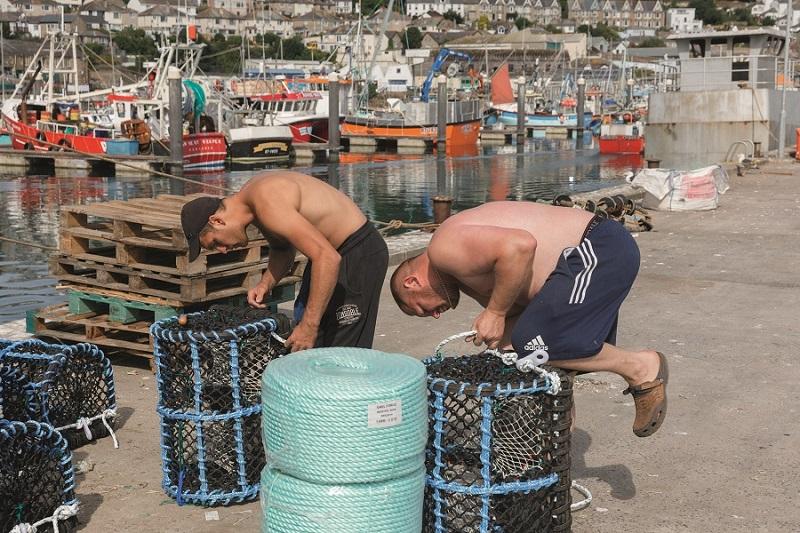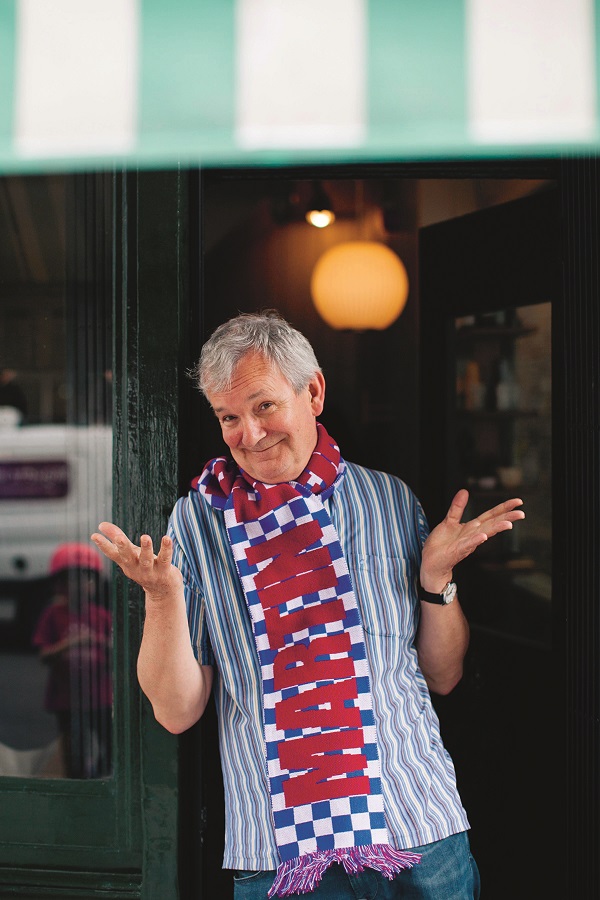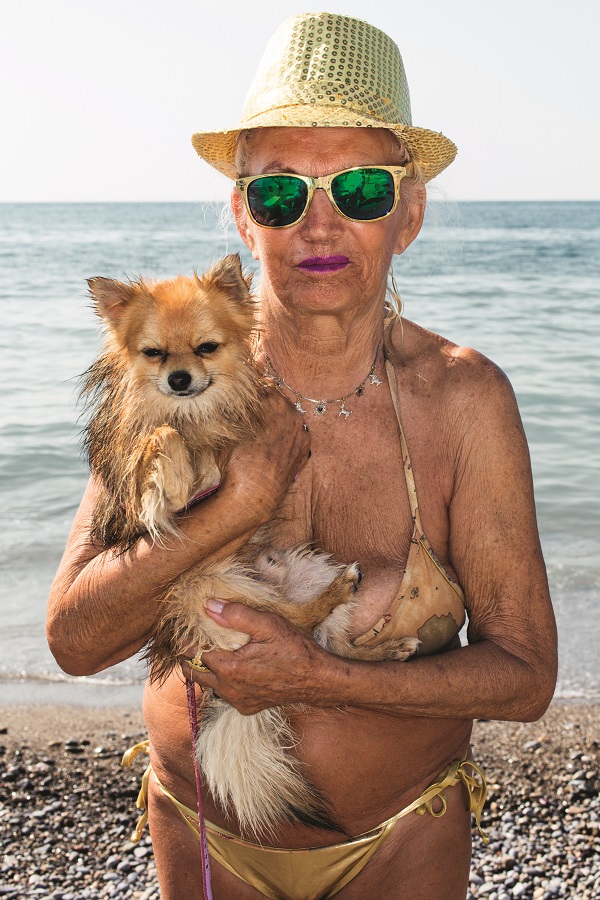Only Human: Martin Parr, National Portrait Gallery review - relentlessly feelgood | reviews, news & interviews
Only Human: Martin Parr, National Portrait Gallery review - relentlessly feelgood
Only Human: Martin Parr, National Portrait Gallery review - relentlessly feelgood
Passing shadows across Brexit Britain

The Magnum photographer Martin Parr has spent decades observing contemporary human activity world-wide as – perhaps – a mesmerised observer, an anthropologist, a tourist, addicted to the vagaries of the human condition.
Parr is adept at finding delight and sometimes boredom, and is fascinated by ritual and recreation. Everyone is out and about, at clubs and shops and streets and sporting events. And on the walls of the gallery these scenes can seem both peculiarly familiar and wildly strange and disconcerting.
 Parr has been showing us people, groups and communities for decades in his brightly coloured photographs. His world view seems at odds with the anxiety and distress that seem at times so all-consuming to so many. Idiosyncratic, eccentric, over the top, exuberant, enjoyable seem the dominant emotions in the groups Parr portrays. Everyone is working or involved in doing something: it is an extrovert world.
Parr has been showing us people, groups and communities for decades in his brightly coloured photographs. His world view seems at odds with the anxiety and distress that seem at times so all-consuming to so many. Idiosyncratic, eccentric, over the top, exuberant, enjoyable seem the dominant emotions in the groups Parr portrays. Everyone is working or involved in doing something: it is an extrovert world.
Topped by Brexit Britain now and scenes from several years back highlights include near naked men posing at Manchester Pride; dog owners, their charges all dachshunds, in Newcastle; lifesavers in Exmouth. One gallery is a big series over time of Parr’s self-portraits, rarely smiling, improbably fleshed out by the accoutrements of jokey photo studios world-wide: here Parr is next to Putin on a grey beach, there next to Lionel Messi on an empty football field, and there his face tops the shiny torso of a body-builder. It is a mini visual anthology suggestive of Parr’s many journeys (Pictured above right: Martin Parr, Online dating profile picture, Hey Saturday, London, England, 2016).
He subtly probes some cultural differences: an old lady on the beach is brave in a bikini as she clutches her wet and sulky small dog to her bosom – her awesome confidence marks out the image as having been taken on the beach at Nice (Pictured below left). There are echoes of Britain as he explores people at tennis matches from Wimbledon to the Us Open to Melbourne to Paris, from players to attendants and attendees; we go to the races at the Kentucky Derby, Ascot and Cheltenham, the Grand National, and Durban, South Africa; and we observe lots of parties and weddings, from a Sikh wedding in Cardiff to the Notting Hill Carnival and a Scottish Country Dance Club not to mention a Bar Mitzvah in New York and a dinner dance at the Savoy.
And then there is Britain: Britain shopping, Britain playing, Britain at school, Britain working, and Britain at the seaside. All British life is here, a little melancholy under the noisy frenetic colour, but Parr by emphasising the ways people occupy themselves, by swimming in icy lakes, buying flowers at Chelsea, turning up at car boot sales, street parties and lots of dressing up makes it all seem almost lovably eccentric, idiosyncratic, even quaint and picturesque.
 There is a curious nostalgia to notions of Britishness underlined in the galleries a pastiche café halfway through with a glass counter filled with cakes, and a special shop selling everything from beach chairs to tote bags and T shirts with the logo Only Human. For all the elaborate tableaux that Parr finds and fixes with his alert and roving eye, there is also a peculiar undertow of melancholy underneath the visual noise. Although these images are all of the proverbial frozen moments it is also as though if everything stopped we would all fall off.
There is a curious nostalgia to notions of Britishness underlined in the galleries a pastiche café halfway through with a glass counter filled with cakes, and a special shop selling everything from beach chairs to tote bags and T shirts with the logo Only Human. For all the elaborate tableaux that Parr finds and fixes with his alert and roving eye, there is also a peculiar undertow of melancholy underneath the visual noise. Although these images are all of the proverbial frozen moments it is also as though if everything stopped we would all fall off.
Parr has photographed exclusively in his brand of heightened colour since the 1980s, strident, dazzling, almost blinding: oddly he is at his most restrained when photographing what he does seem to characterise as the élite. But subtlety and nuance are not part of his visual vocabulary. Here mostly all is for the best in the best of all possible worlds. For what is curiously missing is the sense of the interior lives behind all the countless human permutations on parade. Parr’s human comedy can seem a pageant without meaning, as one ritual fades into another, although occasionally there might be a mocking edge. There is hardly a shadow to be seen.
It is certainly a relentlessly feel good exhibition, and so full that you can easily feel over stuffed. All this hubbub and carry on, all this immense activity is a swerve away from quotidian daily life. We see everybody out and about, and we hardly ever go behind the front door. Parr’s subject is the public face of private lives, everyone dressed up – or down – from party clothes to bathing suits and with somewhere to go.
- Only Human: Martin Parr at the National Portrait Gallery until 27 May
- Read more visual arts reviews on theartsdesk
rating
Explore topics
Share this article
The future of Arts Journalism
You can stop theartsdesk.com closing!
We urgently need financing to survive. Our fundraising drive has thus far raised £49,000 but we need to reach £100,000 or we will be forced to close. Please contribute here: https://gofund.me/c3f6033d
And if you can forward this information to anyone who might assist, we’d be grateful.

Subscribe to theartsdesk.com
Thank you for continuing to read our work on theartsdesk.com. For unlimited access to every article in its entirety, including our archive of more than 15,000 pieces, we're asking for £5 per month or £40 per year. We feel it's a very good deal, and hope you do too.
To take a subscription now simply click here.
And if you're looking for that extra gift for a friend or family member, why not treat them to a theartsdesk.com gift subscription?
more Visual arts
 'We are bowled over!' Thank you for your messages of love and support
Much-appreciated words of commendation from readers and the cultural community
'We are bowled over!' Thank you for your messages of love and support
Much-appreciated words of commendation from readers and the cultural community
 Lee Miller, Tate Britain review - an extraordinary career that remains an enigma
Fashion photographer, artist or war reporter; will the real Lee Miller please step forward?
Lee Miller, Tate Britain review - an extraordinary career that remains an enigma
Fashion photographer, artist or war reporter; will the real Lee Miller please step forward?
 Kerry James Marshall: The Histories, Royal Academy review - a triumphant celebration of blackness
Room after room of glorious paintings
Kerry James Marshall: The Histories, Royal Academy review - a triumphant celebration of blackness
Room after room of glorious paintings
 Folkestone Triennial 2025 - landscape, seascape, art lovers' escape
Locally rooted festival brings home many but not all global concerns
Folkestone Triennial 2025 - landscape, seascape, art lovers' escape
Locally rooted festival brings home many but not all global concerns
 Sir Brian Clarke (1953-2025) - a personal tribute
Remembering an artist with a gift for the transcendent
Sir Brian Clarke (1953-2025) - a personal tribute
Remembering an artist with a gift for the transcendent
 Emily Kam Kngwarray, Tate Modern review - glimpses of another world
Pictures that are an affirmation of belonging
Emily Kam Kngwarray, Tate Modern review - glimpses of another world
Pictures that are an affirmation of belonging
 Kiefer / Van Gogh, Royal Academy review - a pairing of opposites
Small scale intensity meets large scale melodrama
Kiefer / Van Gogh, Royal Academy review - a pairing of opposites
Small scale intensity meets large scale melodrama
 Jenny Saville: The Anatomy of Painting, National Portrait Gallery review - a protégé losing her way
A brilliant painter in search of a worthwhile subject
Jenny Saville: The Anatomy of Painting, National Portrait Gallery review - a protégé losing her way
A brilliant painter in search of a worthwhile subject
 Abstract Erotic, Courtauld Gallery review - sculpture that is sensuous, funny and subversive
Testing the boundaries of good taste, and winning
Abstract Erotic, Courtauld Gallery review - sculpture that is sensuous, funny and subversive
Testing the boundaries of good taste, and winning
 Edward Burra, Tate Britain review - watercolour made mainstream
Social satire with a nasty bite
Edward Burra, Tate Britain review - watercolour made mainstream
Social satire with a nasty bite
 Ithell Colquhoun, Tate Britain review - revelations of a weird and wonderful world
Emanations from the unconscious
Ithell Colquhoun, Tate Britain review - revelations of a weird and wonderful world
Emanations from the unconscious
 Rachel Jones: Gated Canyons, Dulwich Picture Gallery review - teeth with a real bite
Mouths have never looked so good
Rachel Jones: Gated Canyons, Dulwich Picture Gallery review - teeth with a real bite
Mouths have never looked so good

Add comment